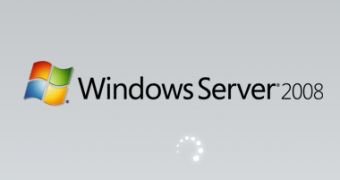Virtualization is by no means a new technology. However, in terms of mainstream adoption, virtualization is just making the first steps on the market, and yet far from maturity. Shipping as a server role in Windows Server 2008, Hyper-V is one component of Microsoft's latest Windows server operating system that is yet to be completed. In fact, despite having released Windows Server 2008 to manufacturing on February 4, 2008, and celebrated the product's launch on February 27, at the Heroes Happen Here event, Microsoft will only wrap up Hyper-V later on this year.
"Hyper-V uses a hypervisor-based architecture and leverages the driver model of Windows for broad hardware support. The hypervisor partitions a server into containers of CPU and memory. As a micro-kernel, it provides mechanisms for inter-partition communication upon which our new high-performance synthetic I/O architecture is built. The root partition owns physical I/O devices and provides services including I/O implemented by the virtualization stack to the child partitions," explained John Sheu, Senior Development Lead, Windows Server Performance Team.
One of the main issues associated with virtualized environments is a degradation of performance compared to physical machines. According to Sheu, when it comes down to performance, Hyper-V multi-processor virtual machines deliver an experience comparable with physical machines. Microsoft touted this aspect as one of the major performance features in Hyper-V. Sheu's example was to focus Windows Server 2008 as a four-processor guest operating system in comparison to the physical four-processor system, in an effort to highlight the scalability of Hyper-V. Still, Sheu stated that Microsoft's work was far from over and that the company would continue to drive an increase in the scalability of multi-processor systems and multi-processor VMs in the upcoming versions of Hyper-V.
"Hyper-V supports 4P VMs for Windows Server 2008 guests and 2P VMs for Windows Server 2003 SP2 guests. For more intensive server workloads, you might consider virtualizing them in 2P or 4P VMs on Hyper-V. Of course, you should use multi-processor VMs only if the workload requires it since there is some cost to having additional processors," Sheu added. "However, operating system kernels and drivers use spin locks which do not block and spin until the lock is acquired, with the assumption that the lock is held for a short period. Virtualization breaks this assumption as virtual processors (VPs) are time-sliced. If a VP is preempted while holding a spin lock, other VPs may spin for a long time wasting CPU cycles."

 14 DAY TRIAL //
14 DAY TRIAL //